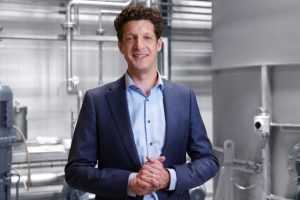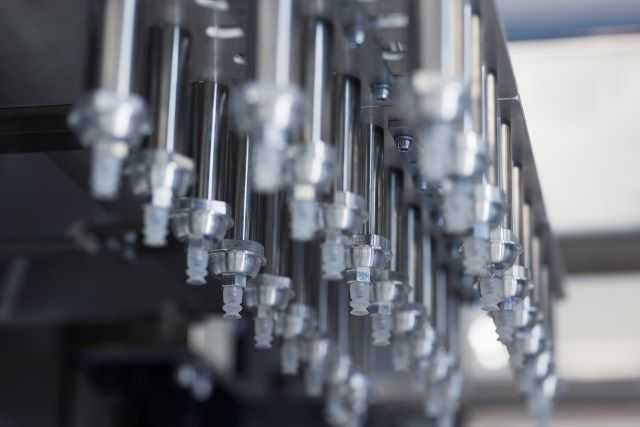MILAN – Huhtamaki is a global sustainable packaging solutions provider and just recently the company has started an exclusive partnership with one of the largest coffee brands, Nespresso, to innovate a sustainable home-compostable paper-based coffee capsule. To explore this collaboration and innovative process development, we talked with Herwin Wichers, Head of FMCG, Fiber Foodservice business, who plays a key role in Nespresso home compostable paper base coffee capsule project.
Huhtamaki has 100 years of experience in sustainable packaging-how has this market segment evolved since now?

“What we’ve tried to bring accross is to take a material positive approch: thare’s not a better material than another and you need to choose the best one that can fit the porpouse to the righ situation. Fiber based has a part in that and Nespresso example is a good proof of this approach. It is a sustainable alternative choice for consumers.
Fiber has already a background: we used that for decades and the latest step-change is the proprietary high-precision technology for smooth molded fiber. Fiber products in packagings have existed from a very long time but I think that high-precision is the game changer here: to be able to have a very high tolerance and to guarantee food safety too.
We can do very different things for many customers in terms of innovation using fibers, but the project with Nespresso has been the most challenging one until now. We’ve been able to mold fiber to a very complex shape and to make that work in very challenging conditions. The real break through is the development of the partnership, using each others’ expertise to get the final result.
I think that the main change in technology in the last three years that we’ve worked with Nespresso is the “Ultra High-precision technology”, referring to the ability to manufacture products with the very demanding precision tolerances, specifications which were never reached in any other fiber applications before. Using our product technology to make that happen, having a fiber that can work in such restrained conditions. Also we’ve worked on the iterations with machines and design: how we find the way that the fiber flows, how we manipulate the fiber to form into the capsule.
The other key part is the cooperation between ourselves and Nespresso: having a customer that has worked with an existing material such as alluminium, truly understanding what capsules need and what’s critical in this system, it has been very useful to apply to our product design and process technologies.”
In 2021, the partnership with Nespresso begins: what does this collaboration with a leading global capsule company represent for you?
“We are already well known in the packaging sector, but of course it is a privilege to work with a company that is a market leader in capsule single portion coffee, also in terms of quality in all aspects: it’s a journey of learning together. We’ve started with the ambition for both companies to make this work on a higher level.
Being part of this launch of course has brought us new opportunities, and also we’ve already found new applications in design and innovation itself of fiber that we’ve never though before. For sure there are new opportunities for new customers and stakeholders.”
How did you realize the end result of paper-based capsules?
“When you look to the development and the way that we really use the designs sprints, you look to a lot different solutions and you test them and try them very quickly. You learn very fast together: in the end you reached the final solution that is a combination of high level food grade barrier with the smooth molded fiber, and the capsule is 82% paper pulp, and is home compostable (TÜV Austria certified home compostable capsules).
And for the first time you have a truly home compostable solution without compromising the quality of Nespresso coffee. In the end it’s a combination of a compostable fiber capsule and a thin polymer film put inside the capsule that protects from it from the risk of oxidation. “
How do they manage to preserve the quality of the coffee contained within them?
“It’s done through the high level food grade barrier, it’s basically a biopolymer laminate that’s used inside the capsule.”
Is this technology exclusively for Nespresso, or can it be shared with other partners?
“This high-precision technology can be used for many other applications, also in a widest range of food and non food products perse. But when we talk about coffee capsules we’ve been exclusive with Nespresso.”
Is there a prospect of adapting this material for the Vertuo system as well?

“ The focus till now has been on the OL (Original Line) system.”
What are the next developments for Huhtamaki and sustainable packaging? Will prices more affordable to the end consumer also be reached?
“Fiber based are not the only products that we have, if we look at flexibles accross all the different segments of products we really focus onto sustainability and recyclability. We’ve already a quite big presence in ice creams, dairies; another exemple is the cooperation with McDonald’s with multi fiber based products. The range is actually quite wide and it’s what makes us unique. We have a material positive approach: we use the right application and technology to produce what the customer needs.
About the price, I think that we have to realize that nowadays the market it’s shaped by the combination of of new technologies and what consumers are looking for and what they are willing to pay for. it’s a journey that everybody needs to go on. “
Herwin Wichers, Head of FMCG Category Fiber Foodservice, Huhtamäki
Herwin is an experienced professional with a demonstrated history of managing and implementing change. He has over 15 years’ experience in the packaging industry, in a wide range of roles and responsibilities from sales to general management. Skilled in business development, global account management, international project implementation and continuous improvement. He has been working with the world’s leading FMCG brands and companies. Herwin holds a Master of Science focused on Technology Management and Business Administration and is a graduate of Insead executive education. His main driver
is finding sustainable growth opportunities and finding win-win solutions that are better for people, planet and business.

















